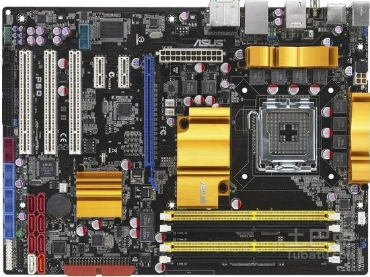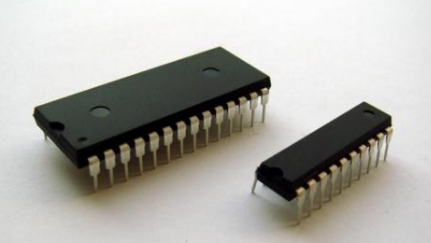01 Question
Many students have been struggling with:Should I learn microcontrollers or embedded systems?
Some say that microcontrollers are also embedded systems; is that correct?
Is embedded just Linux?
Today, let’s discuss this issue.
02 What is a Microcontroller
The essence of a microcontroller is a type of computer. So what is a computer?A computer is an electronic system that includes a CPU, memory, and certain peripherals (I/O pins, network ports, I2C interfaces, serial ports, etc.), and can run specific programs. There are many types of computers. Large ones like supercomputers can be as big as a room. Smaller ones like personal desktop computers and laptops are well-known, and even smaller devices like tablets and smartphones are also computers. Even smaller devices like smartwatches are computers. As long as it meets the above definition, with hardware including several key components led by the CPU, and software capable of running programs, it is a computer. A microcontroller is a type of computer characterized by being “single-chip”. What does single-chip mean? Is there also a multi-chip? Indeed, there is. In the image below, the left shows a computer motherboard, while the right shows a microcontroller. It is clear that the computer motherboard is very complex, while the microcontroller is quite simple. 
 If you have seen a computer motherboard, you know that its core is a PCB board, on which many chips are soldered. Each chip is essentially a “single chip”, so the computer is a “multi-chip system”. A microcontroller is a computer system that consists of only one chip (essentially, it has only one semiconductor chip). So why do some computers have multiple chips while others have just one? It actually comes down to the size of functionality. A Tibetan mastiff is large, while a pet dog is small, but they are both dogs; the same principle applies here.
If you have seen a computer motherboard, you know that its core is a PCB board, on which many chips are soldered. Each chip is essentially a “single chip”, so the computer is a “multi-chip system”. A microcontroller is a computer system that consists of only one chip (essentially, it has only one semiconductor chip). So why do some computers have multiple chips while others have just one? It actually comes down to the size of functionality. A Tibetan mastiff is large, while a pet dog is small, but they are both dogs; the same principle applies here.
03 What is Embedded
A microcontroller has a clear definition: it is a computer system on a single chip. Although different microcontrollers may have different configurations, performances, manufacturers, and even instruction sets and development methods, they are all complete computer systems on one chip, and this definition is accurate. Embedded, on the other hand, is a less clear definition; there is no very explicit definition of the term “embedded”. Embedded (in English, embedded) is essentially a method of electronic design that involves embedding a microcomputer within electronic products. Any electronic product that conforms to this design method can be called an embedded system. This is somewhat like the Hakka dish of stuffed bitter melon; when I first arrived in Guangdong, I thought it was delicious but the name was strange. Later, I learned that “stuffing” is actually a method of operation, which involves filling the bitter melon or tofu with meat filling. This method of stuffing is called “stuffing”. Therefore, embedded systems and stuffed bitter melon are similar naming methods. Why is there this term? It is actually due to historical reasons. In the early days, semiconductor technology was not advanced, and computers were large. Therefore, electronic products at that time had computers that were separate and connected by wires to control them. Think about an air conditioner; it only cools and has no buttons, and it connects to a computer via a wire, allowing control through the computer’s keyboard. This type of air conditioner is called a non-embedded system. However, the air conditioners you see in reality are not like this; they have buttons that can be pressed directly. Essentially, the air conditioner integrates a circuit board inside, which is actually an embedded computer used to control the air conditioner. Because the computer circuit board is “embedded” in the air conditioner, it is called an embedded system. So now you understand that all computer systems you see today: Except for personal computers (and actually there are also specialized computers like servers, but they are rarely seen), are essentially embedded systems. This includes: household appliances like air conditioners, refrigerators, washing machines, large items like cars, trains, and airplanes, smartphones, smartwatches, and other wearable smart hardware, cameras, smart locks, self-service machines, and so much more.
04 Is a Microcontroller Embedded?
So is a microcontroller considered embedded? In short: yes. Because in many embedded products, the embedded computer system is indeed a microcontroller; for example, the control board embedded in an air conditioner is essentially a microcontroller. In fact, most of the computer systems embedded in household appliances are microcontrollers. Microcontrollers are simple, inexpensive, and sufficient for the task, making them the most cost-effective and suitable choice. Currently, the largest market for microcontrollers is in household appliances, and of course, future IoT applications will increase and become a significant growth market for microcontrollers.
05 Broad and Narrow Definitions of Embedded
The concept of embedded is actually very generalized. When people talk about the term embedded, they may mean different things. The embedded concept we discussed above is the original definition of embedded, which is the so-called broad definition of embedded. The narrow definition of embedded actually refers to “embedded Linux systems”. This narrow definition of embedded originally referred to embedded computer systems running Linux. Later, it also included other embedded systems that are on par with Linux (such as WinCE, Vxworks, Android, etc.). These embedded computers capable of running Linux are not microcontrollers; due to resource and performance limitations, microcontrollers cannot run Linux. Common products like smartphones, car central control screens, industrial HMIs, and network cameras fall into this category of narrow embedded systems. So when you discuss whether a microcontroller counts as embedded with someone, you should first confirm what they specifically mean by embedded. Now we can conclude: From a broad perspective, microcontrollers belong to embedded systems, while from a narrow perspective, microcontrollers do not belong to embedded (Linux).
06 Other Related Questions
In fact, there are many frequently asked questions about microcontrollers and embedded systems. We will write articles to address them one by one later, solving one question per article. These questions include: Should I learn microcontrollers or embedded systems? What are the advantages and disadvantages of microcontrollers? What are the advantages and disadvantages of embedded systems? Do I need to learn microcontrollers before learning embedded systems? Is it easy to find a job with microcontrollers (embedded systems)? Do I need to learn C (C++, Java, Python) to work with microcontrollers (embedded systems)? Is working with microcontrollers (embedded systems) a temporary job? Will I be out of work after 35? Do I need to learn hardware PCB design to work with microcontrollers (embedded systems)? Do I need to learn RTOS (ucos, freertos) for microcontrollers? How much can I earn working with microcontrollers (embedded systems)? What is the career outlook? …… Remember to follow our public account for more updates!-END-
You May Also Like
These microcontrollers work right out of the box!
On Embedded vs. Microcontrollers: A Love-Hate Relationship.
Do you need to buy a development board to learn embedded systems?
In Conclusion
If you find this article helpful,please share it, as it motivates us to continue updating.5T Resource Giveaway! Including but not limited to: C/C++, Linux, Python, Java, PHP, Artificial Intelligence, PCB, FPGA, DSP, LabVIEW, microcontrollers, etc.!Reply “More Resources” in our public account to get them for free, we look forward to your attention! Long press to recognize the QR code in the image to follow us
Long press to recognize the QR code in the image to follow us